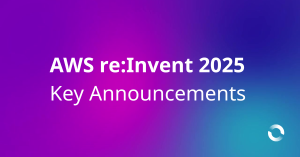Don’t get me wrong, I love the HashiCorp products. I’ve been a Vagrant user since way back in my BC (Before Cloud) days and have continued a strong run of success backing the use of HashiCorp product. But the biggest issue I have is ensuring that the images created through Packer are worthy of being promoted along a delivery pipeline.
This post is about using KitchenCI, InSpec and a small Rakefile to create an enhanced AWS Machine Image (AMI) creation and validation workflow.
ENSURING VALID AMIS
In my previous post, I talked about using KitchenCI and InSpec as a way to validate the output of a Packer build by launching the image and running some tests. This works really well as a first step into validated images, but has a clunky workflow that requires the launch of 2 different EC2 instances. It also creates the AMI before it is actually validated.
While it might not seem like a big issue, this leaves us with potentially invalid images – an artefact should not however be created and available unless it is known good. With the current Packer-based workflow we have an AMI that is not confirmed as good and no controls in place to ensure that it is not used until known good.
RETHINKING OUR USE OF PACKER
Removing Packer from the tool-chain is not a decision taken lightly, it does such a good job in easily defining details of the host images, run the provisioner, create the AMI, and even which accounts and regions the AMI is shared with – it just fails on the validation activity.
How can we work with Packer to achieve a confirmed quality outcome?
One option is to have a separate AWS account that AMIs are built in. We could build an AMI using Packer, fire it up using KitchenCI and run InSpec tests to validate. If the tests failed we could simply delete.
This is the workflow we covered in the previous post, but then introduces the issue of not being able to use Packer’s built in tooling to do sharing. We need to restrict the sharing of the image to other accounts and regions until after the image has been verified.
That can be fixed too, sharing the image between regions and accounts is only a couple of API calls, so a simple Rakefile as such could get the job done easily.
Rakefile to build and deploy AMI
require 'parallel'
require 'aws-sdk'
require 'pry'
require 'retryable'
task :deploy, [:image_id, :src_region, :dst_region, :account_ids] do |_t, args|
Retryable.retryable(tries: 5,
on: Aws::EC2::Errors::RequestLimitExceeded,
sleep: 60) do
src_region = args[:src_region]
dst_region = args[:dst_region]
account_ids = args[:account_ids].split(' ')
client = Aws::EC2::Client.new(region: dst_region)
target_resource = Aws::EC2::Resource.new(client: client)
source_resource = Aws::EC2::Resource.new(client: Aws::EC2::Client.new(region: src_region))
source_image = source_resource.image(args[:image_id])
puts "Copying #{source_image.image_id} to #{dst_region}"
resp = client.copy_image(
name: source_image.name,
source_image_id: source_image.image_id,
source_region: src_region
)
new_image = target_resource.image(resp.image_id)
puts "Waiting for #{resp.image_id} (#{dst_region}) to become available"
new_image.wait_until(max_attempts: 60, delay: 90) do |im|
im.state == 'available'
end
puts "Applying tags to new image #{new_image.image_id} (#{dst_region})"
new_image.create_tags(tags: source_image.tags)
puts "Sharing #{new_image.image_id} (#{dst_region}) with #{account_ids}"
client.modify_image_attribute(
attribute: 'launchPermission',
user_ids: account_ids,
operation_type: 'add',
image_id: new_image.image_id
)
end
end
Our workflow would now look like:
packerto launch the EC2 instance, connect to and provision the serverpackerto create an AMI from the EC2 instancepackerto shutdown the EC2 instance and cleanupkitchento launch the EC2 instance from the AMIkitchento launchinspecto validate the imagekitchento shutdown the test EC2 instance and cleanuprakecopies the image between regions and accounts
Nice and neat – we only need 3 configuration files, one for Packer, one of KitchenCI and the Rakefile.
REPLACING PACKER WITH KITCHEN
If we look at the difference between KitchenCI and Packer in this workflow, they are basically doing the same thing, and while KitchenCI can run a provisioner and tests, Packer can only run a provisioner.
By using the provisioning capability of KitchenCI the only activity we are left with is the creation of the AMI, and because KitchenCI has multiple stages in its workflow we can drive it in a way that means we only get an AMI if the tests have passed.
Adding another task to our Rakefile will extend the current KitchenCI workflow to add in conditional creation of an AMI on success.
Rakefile with new build target
task :build, [:os_label] do |_t, args|
loader = Kitchen::Loader::YAML.new(local_config: '.kitchen.yml')
instances = Kitchen::Config.new(loader: loader)
.instances
.get_all(/#{args[:os_label]}/)
client = Aws::EC2::Client.new(region: 'ap-southeast-2')
resource = Aws::EC2::Resource.new(client: client)
instances.each do |instance|
at_exit { instance.destroy }
begin
Retryable.retryable(tries: 5,
on: Aws::EC2::Errors::RequestLimitExceeded,
sleep: 60) do
instance.destroy
instance.create
instance.converge
instance.setup
instance.verify
ec2_instance = resource.instance(instance.diagnose[:state_file][:server_id])
instance_name = "kitchen-#{args[:os_label]}-secure-#{Time.now.to_i}"
puts "Creating #{instance_name} from #{ec2_instance.instance_id}"
image = ec2_instance.create_image(name: instance_name)
image.wait_until(max_attempts: 60, delay: 90) do |im|
im.state == 'available'
end
image.create_tags(tags: ec2_instance.tags)
File.write('env.properties', "IMAGE_ID=#{image.image_id}")
end
rescue Kitchen::InstanceFailure
abort('The image failed verification')
rescue Aws::Waiters::Errors::TooManyAttemptsError
abort('Timed out waiting for image')
end
end
end
We can now use the KitchenCI development workflow to develop our server provisioning code, ensuring we provide sufficient testing along the way, and easily use that same codebase in our CI process to generate, validate and publish images between our accounts.
With this workflow you can maintain a single kitchen.yml file which contains the definitions for the provisioner and validation stages of image creation – and a simple and reusable Rakefile which can be wired into an CI/CD pipeline for reuse.
By replacing our Packer workflow with KitchenCI and a Rakefile our workflow would now look like:
kitchento launch the EC2 instancekitchento connect to and provision the serverkitchento launchinspecto validate the imagerakecreates and AMI from the running serverrakecopies the image between regions and accountskitchento shutdown the EC2 instance and cleanup
Importantly we only get an AMI if the provisioning succeeds AND the spec tests are successfully executed.
Example kitchen.yml file
---
driver:
name: ec2
aws_ssh_key_id: <%= ENV['KITCHEN_SSH_KEY_NAME'] %>
associate_public_ip: true
retryable_tries: 10
retryable_sleep: 60
instance_initiated_shutdown_behavior: terminate
transport:
ssh_key: <%= ENV['KITCHEN_SSH_KEY_PEM'] %>
provisioner:
name: ansible_playbook
roles_path: ansible/roles
playbook: ansible/playbook.yaml
retry_on_exit_code:
- 3
max_retries: 3
verifier:
name: inspec
platforms:
- name: centos6
provisioner:
hosts: centos6
driver:
tags:
Name: centos6-secure
created_by: test-kitchen
image_search:
owner-id: "679593333241"
name: CentOS Linux 6 x86_64 HVM EBS 1704*
- name: centos7
provisioner:
hosts: centos7
driver:
tags:
Name: centos7-secure
created_by: test-kitchen
image_search:
owner-id: "679593333241"
name: CentOS Linux 7 x86_64 HVM EBS 1704*
- name: dev-sec
verifier:
inspec_tests:
- inspec/security
Once you have this KitchenCI file in place you can build the different platform targets as below:
bundle exec rake build[centos7]
While this process looks a little more complex than using Packer alone, you gain a number of new capabilities that are worth the extra complexity:
- A solid workflow that only allows VALID images to be created
- A single approach to build multiple operating system images
- Composable validation rules through the use of InSpec
- Feature compatible process that supports cross account and region Sharing
It would be great if the KitchenCI team took on the challenge to add the AMI/Sharing steps into their tool, their current position is that this requirement is beyond the scope of their tool.
Thats ok, for the rest of us we can use the simple Rakefile to extend Kitchen.

Steve has been with Cevo for 10 years now, starting as one of the forming members of the original business. He runs our Migration practice, has been instrumental in delivering our AWS competencies and taken responsibility for delivering a number of our most important engagements.




